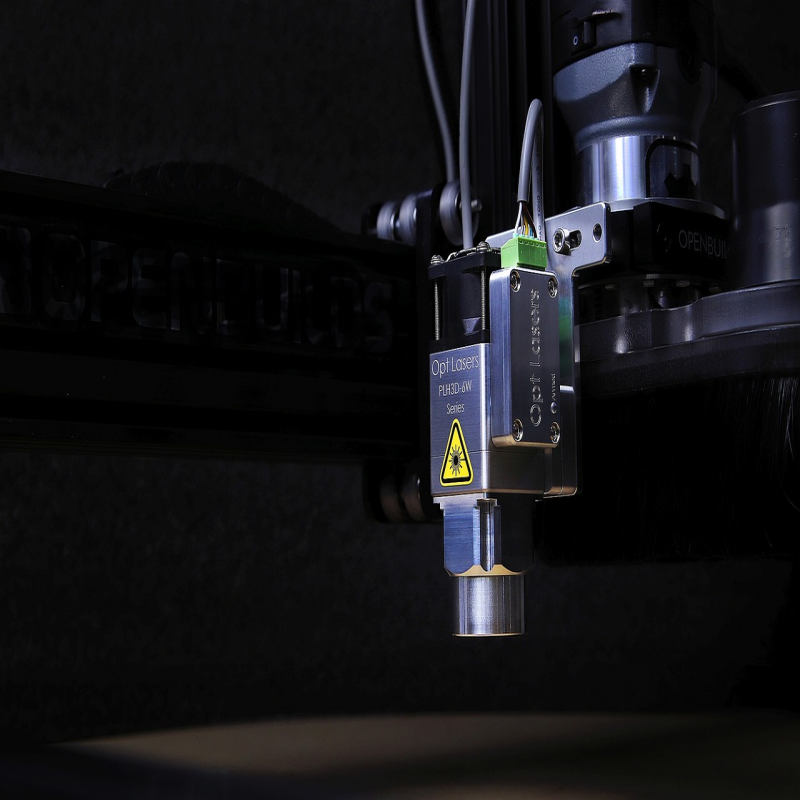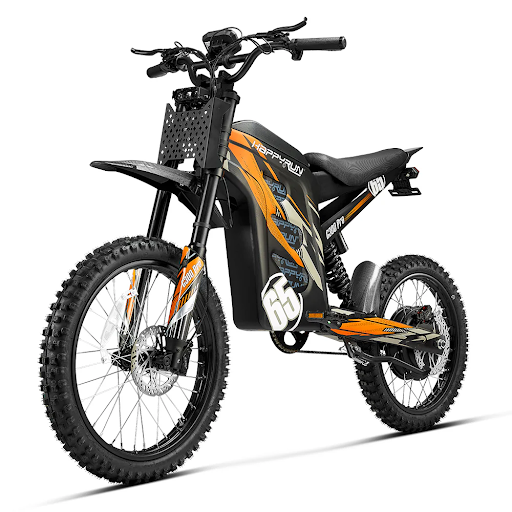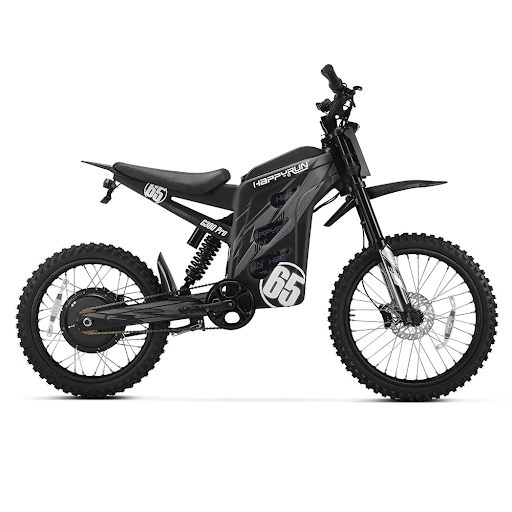Technology
The Ultimate Guide to Choosing the Right Engraving Tool for Your Projects

Engraving is a timeless craft that allows you to add intricate designs and personal touches to a wide variety of materials. Whether you are a hobbyist, artist, or professional, having the right engraving tool can make all the difference in the quality and precision of your work. In this guide, we’ll explore what engraving tools are, the different types available, and how to pick the perfect one for your needs. By the end, you’ll have a thorough understanding of how to select and use the right tool to bring your creative visions to life.
What is an Engraving Tool?
Simply put, an engraving tool is any instrument used to carve, cut, or etch designs into a surface. This could be anything from a simple hand tool like a chisel or stylus, to high-tech laser engraving machines. The goal of these tools is to help you create detailed patterns, letters, or images on materials such as wood, metal, glass, plastic, and even stone. Engraving tools come in many shapes and sizes, each suited to different projects and skill levels. Understanding these differences will help you find the ideal tool that matches your creative vision.
Engraving as a craft dates back thousands of years and has been used in countless cultures for decoration, communication, and artistic expression. Today, the variety of tools available combines traditional craftsmanship with modern technology, offering endless possibilities. Whether you want to inscribe a heartfelt message on a gift or create intricate artwork for sale, choosing the right tool is the foundational step.
Common Types of Engraving Tools
Engraving tools range from basic hand-held instruments to complex computerized systems. Here are the most common types you might encounter:
1. Manual Engraving Tools
The oldest and most traditional engraving tools are manual handheld devices such as chisels, burins, and engraving pens. These require a steady hand and practice but offer excellent control for delicate and detailed work, making them perfect for artists who enjoy the tactile feel of working directly on the material.
Manual tools are low cost, precise for small details, and don’t require electricity or complex setups, making them ideal for woodworkers, jewelers, and hobbyists who prefer traditional techniques. Using these tools often requires sharpening and maintaining the edges regularly to ensure clean cuts.
2. Electric Rotary Tools
Moving to more modern options, electric rotary tools like the popular Dremel use a motor to spin small bits at high speeds. These bits come in various shapes and sizes, allowing for cutting, sanding, grinding, and engraving.
Compared to manual tools, rotary tools are faster and more versatile, making them suitable for a range of materials and easier for beginners and intermediate users to master. With interchangeable bits, you can switch between engraving wood, metal, glass, or plastic with relative ease. They also allow for more consistent depth and speed, which is useful for repetitive patterns or lettering.
3. Laser Engraving Machines
At the high-tech end are laser engraving machines, which use focused laser beams to etch designs with extreme precision. They handle complex patterns and produce clean, consistent results on materials like wood, metal, acrylic, and leather.
Although more expensive and requiring a learning curve, laser engravers open up professional-level possibilities by automating and replicating designs quickly. These machines often connect to design software, allowing you to import digital images or text for engraving, making them perfect for businesses or serious hobbyists.
4. Specialized Engraving Tools
In addition to the above, there are more specialized tools for niche applications. Pneumatic engravers use compressed air to power rapid hammering for fine detail on metal. Diamond-tipped tools are necessary for very hard surfaces like stone or hardened steel. CNC (Computer Numerical Control) engraving machines combine computerized control with various cutting tools, ideal for mass production or complex industrial work.
How to Choose the Right Engraving Tool
Selecting the perfect engraving tool depends on several factors:
Material
The material you plan to engrave plays a crucial role — wood is forgiving and works well with manual and rotary tools, metal requires harder, more durable tools like diamond tips or laser engravers, while glass and acrylic are best suited for laser engraving or specialized bits. Some materials, like soft plastics, can be easily damaged by high-speed rotary tools, so choosing the right bit and speed setting is also important.
Detail and Complexity
The level of detail and complexity needed also matters: fine details or text call for laser engravers or high-quality rotary tools, whereas rougher, artistic cuts can be effectively achieved with manual tools. Consider how intricate your designs are and whether you need to replicate the same pattern multiple times accurately.
Budget and Frequency of Use
Budget and frequency of use influence the choice as well. Manual and basic rotary tools are affordable and great for occasional use, while regular users or business owners may want to invest in laser engravers or CNC machines. Factor in not only the initial cost but also maintenance, accessories, and consumables like bits or engraving tips.
Skill Level and Safety
Skill level and safety should be considered; beginners might find rotary tools easier and safer to handle, while advanced users might prefer the precision of manual tools or the efficiency of lasers. Training and comfort with your equipment will influence your results and enjoyment of the process.

Tips for Using Engraving Tools Safely and Effectively
When working with engraving tools, safety should always come first. It’s important to wear safety goggles and gloves to protect yourself from debris and accidental slips. Securing your workpiece firmly with clamps or a vise will help avoid accidents and ensure precision.
Before starting your final project, practice on scrap material to develop your skills and get comfortable with your tools. This practice can save you from costly mistakes and improve your confidence. Keeping your tools clean and sharp will not only improve the quality of your work but also prolong the life of the tools. Regularly inspect bits and tips for wear and replace them when needed.
Finally, always follow the manufacturer’s instructions and perform regular maintenance to keep everything in top condition. When using electric or laser tools, ensure your workspace is well-ventilated, and avoid inhaling dust or fumes generated by engraving certain materials.
Popular Applications of Engraving Tools
Engraving tools are widely used in many fields and hobbies:
- Personalized Gifts: Adding names, dates, or messages on items such as jewelry, glassware, wooden plaques, or leather goods to create meaningful, custom presents.
- Crafts and Art: Creating decorative patterns and unique designs on various surfaces, turning simple objects into works of art.
- Industrial Use: Producing serial numbers, logos, and other important markings on metal parts and machinery, critical for identification and quality control.
- Sign Making: Crafting detailed signs with raised or etched letters for businesses, events, and decorations.
- Restoration and Repair: Re-engraving worn inscriptions on antiques, trophies, or heirlooms to restore their original beauty and value.
Conclusion
Choosing the right engraving tool is essential to bringing your creative ideas to life with precision and ease. Whether you prefer the traditional feel of manual tools, the versatility of electric rotary devices, or the high-tech accuracy of laser engraving, there is a perfect option for everyone. Take your time to consider your project needs, materials, budget, and skill level before making your purchase.
If you want to explore the wide range of engraving tools available and find the one that fits your project best, check out this engraving tool — your perfect partner for all your engraving needs. Happy engraving!
Technology
The Rise of Paid Telegram Communities: How Creators Are Monetizing Group Chats

In recent years, Telegram paid channels and VIP paid groups have become one of the most effective ways for creators to build loyal audiences—and earn a revenue stream for their time, insights, and content. Unlike traditional social media, Telegram enables creators to establish intimate, exclusive communities where members can engage directly, learn, and connect.
From trading signals and crypto insights to coaching and niche education, Telegram’s flexibility has made it the go-to hub for subscription-based communities. But the real question is: how do you monetize a community effectively without spending hours managing payments, renewals, and access?
The Shift Toward Exclusive, Paid Communities
Telegram has evolved beyond a simple messaging app. For many creators, it’s now a business platform. People no longer just join groups—they subscribe to private spaces where they can get real value. This trend has exploded because Telegram offers something other platforms lack: simplicity, privacy, and automation.
Instead of relying on crowded Facebook groups or algorithm-heavy apps, creators are turning to paid Telegram groups and channels where they have full control. It’s like owning your own membership site—without the tech headaches.
Monetization Made Easy with InviteMember
If you’re wondering how creators actually run their Telegram paid channels, the answer often starts with the InviteMemberBot.
InviteMember is a powerful membership management system designed specifically for Telegram. It helps creators automate everything—from accepting payments to granting access to private groups or channels. The beauty is that InviteMemberBot isn’t a subscription bot itself, but rather an intelligent management platform to create your own subscription bot and business landing page, and connect your Telegram community with your payment processor.
Here’s how it works:
- You connect your Telegram bot and community.
- Set up your plans—monthly, annual, or even lifetime access.
- InviteMember handles the automation: once someone pays, they’re added to your paid Telegram groups and channels.
- If they don’t renew, the system automatically removes access.
It’s that seamless. No spreadsheets. No manual tracking. Just smooth, automated membership management.
Many creators share their Telegram paid channels link directly through InviteMember’s checkout page, turning social followers into paying community members in seconds.
Why Creators Are Choosing Telegram for Paid Memberships
- Global Audience Reach – Telegram’s international popularity means creators can sell subscriptions worldwide.
- Direct Connection – No algorithms or middlemen—just authentic community interaction.
- Low Overhead – Running a VIP paid group on Telegram is cheaper than building and maintaining a website.
- Automation Ready – Platforms like InviteMember remove all the manual work.
Enhancing Support with SUCH bot
For creators who want to offer quick support or collect feedback inside Telegram, the SUCH bot is a simple yet powerful option. It’s a bot builder that lets you create support or feedback chatbots with ease—no coding needed. You can even enable AI-powered automatic replies to handle common member questions or guide new subscribers.
While InviteMember takes care of subscriptions and access, SUCH bot helps you stay responsive and organized by keeping support conversations running smoothly right inside Telegram.
Building a Sustainable Income Stream
The rise of Telegram paid channels marks a shift in how creators earn online. Instead of chasing ad revenue or affiliate links, they’re turning their expertise into recurring income. Whether you’re a fitness coach, educator, or market analyst, monetizing a community through a paid Telegram setup can be the simplest, most direct business model you’ll ever launch.
The formula is straightforward:
Engaged audience + quality content + smart automation = sustainable income.
Final Thoughts
Paid Telegram communities are no longer a niche trend—they’re a growing economy. Tools like InviteMember make the process of setting up and managing these communities effortless, while the SUCH bot keeps member communication seamless through AI-powered support.
If you’ve ever thought about turning your Telegram following into a revenue stream, now’s the time. With a well-structured paid Telegram group, an automated setup, and authentic engagement, your community can become both a source of impact and income.
Technology
From Home to Hills — My First Long-Distance Camping Trip on an Electric Bike

Something is just magical about the thought of getting out of the city, the noise, the rush, the constant traffic, and going out into the hills, where it is time to slow down. I had always wanted to have a visit which would bring me back to the world of nature, but I wanted to do something different this time. No automobile, no company, no one, only me, my mind, and the open highway.
That is when I encountered the idea of the electric dirt bikes. I had heard about them previously, but never thought that one could cope with a long-distance ride. Curiosity became excitement, and within days, I had already decided to go camping with my first-ever camping trip, and all I needed was an electric dirt bike to be my transport.
The notion was insane — to ride a battery-powered bike to the hills out of my home. Yet I longed inside myself to have the excitement of something new. And when I was filling my camping bag and closing my jacket, I never thought this would be among the most memorable moments in my life.
The Road Begins -New Way of Travelling
So, I was instantly on the road. I knew how this ride was going to be different. The electric dirt bike was hardly hearable, and the acceleration was felt instantly and in a very strong manner. The highway was endless, and all the twists and turns were a challenge to navigate.
I sped over silent farms, little rivers, and mountain curves over which the morning mist rushed on the earth. No fuzziness or engine sound, they were on a fuel bike; the only thing one heard was the wind gently swirling around and the tires gently rolling on the road.
That is when I became aware of the real beauty of electric travel: it is silent, immobile, and connected with nature.
Climbing Higher: The Freedom of Electric Power
I was shocked to find how easy it was to ride the bike on steep roads as I started riding uphill roads. In most cases, these climbs need some force- either on the engine or the rider. However, the electric dirt bike seemed to ride up as though it was made to face this challenge.
Each thrust of the throttle enabled me to feel the power at my feet. No indecision, no struggle–but pure hard silence. I stopped in between to get some of the snapshots and realised how clean the air was. No puffing-out of smoke, no scraping of gears, just me, and the cry of birds in the valley.
The Hero of the Journey: HappyRun 6500W Electric Dirt Bike G300 Pro -2025

The main thing that caught my attention with this unforgettable journey was the HappyRun 6500W Electric Dirt Bike G300 Pro 2025, which is the real highlight of my trip. It is not just a bike, but a high-performance and missionary bike that would surely be ridden by everybody who desires to experience the freedom of roaming out of the door. Her motor is very strong, with 6500W, and thus, has a tremendous torque, and this allows it to climb a hill or rather rocky mountains, which are not stable. It accelerates fastest, and the top speed is 50 mph which is mind-boggling, but it is a well-balanced and stable car.
The most impressive thing to me was the lithium battery that was 72 V 30 Ah, which enabled the bike to cover a course with almost 70 miles of range, given it had a single cycle of charge. That is the type of reliability that we would fall in love with in the eyes of those of us who are going on long-distance adventures, such as myself.
Its suspension is powerful and capable of going through all the bumps, and its brakes are fast, and they can work even in rough areas. It is not that delicate, but it is modern in fashion and a head-turner anywhere.
Mountain Mornings and Camping Nights
The electric dirt bike had brought me to the place where nature was the master; there was no pollution, no crowd, only millions of stars above me. I sat on a small campfire and wondered how this travel was so dissimilar to conventional travel.
On the following morning, I rode the bike to see what was around. What was new in each direction was a muddy slope and a rocky turn, and hidden falls. The bike managed to cope with everyone like a professional, which led to the conclusion that adventure and technology can be the most successful combination.
Why Everybody has to visit an Electric Dirt Bike Adventure
You are denying yourself something special in case you have never had an electric bikes for sale. You can either camp or simply go outdoors; however, you will discover that with an electric dirt bike, every second will be thrilling and liberating.
Now you can travel further than sightseeing more, and yet have energy to appreciate your destination. And as there are such a great number of electric dirt bikes that are being sold today, there has never been a better moment to have an adventure of your own.
The Future of Electric Adventures
Nature is not interrupted, and he can be viewed without disturbing it, with no fumes, no noise, and basic exploration. The new electric bikes for sale in the market are no longer associated with short-range rides, but can also go on long trips and comfortably ride to work. They are also affordable in the use of fuel and maintenance, not to mention that it is a win-win situation for not only adventure enthusiasts but also for regular riders.
The Travelling That Changed It All
The trek out of the home to the mountains was not merely a different camping trip; it was, in addition, a travel reminder that traveling could be new. I did not just come to the scene, but I had gone all the miles of the journey, all the variety of scenes, all the snort of mountain air.
With its HappyRun 6500W Electric Dirt Bike G300 Pro 2025, the company has managed to make a memorable experience out of an ordinary adventure. It gave me the feeling of being sure, strong, and comfortable at the same time, and I’ll be in love with the idea of sustainable travel.
In the same way, you can calculate your next outdoor adventure, and you will forget where to go, but you should also question yourself, how to find the way there. The right ride can turn a ride into a lifetime experience as at times, as it can occur.
Technology
New Trends in Eco-Friendly Carpet Cleaning Solutions

Modern consumers are becoming increasingly aware of their environmental impact, and the carpet cleaning industry is responding with a surge of sustainable solutions. These new trends not only emphasize green practices but also enhance overall cleaning effectiveness, creating safer and healthier spaces. Whether for homes or businesses, these innovative changes are transforming how people approach cleanliness. With the adoption of new techniques and technology, both professional services and DIY enthusiasts have more eco-friendly choices than ever before. To learn more about professional options in this field, consider exploring local carpet cleaning services. From reducing water usage to leveraging plant-based ingredients, today’s carpet care solutions focus on minimizing ecological impact while maximizing results. These advancements represent a significant step forward, aligning the industry with a broader movement toward sustainability, health, and transparency. The latest innovations, including low-moisture techniques, microbial cleaning, and advanced technology, enable consumers to achieve a deep clean while maintaining environmental responsibility.
Low-Moisture Cleaning Techniques
One of the most significant shifts in carpet cleaning is the move toward low-moisture methods such as encapsulation and bonnet cleaning. These techniques use far less water than traditional steam cleaning, drastically reducing drying times and lowering the risk of mold or mildew developing under carpets. They’re especially valuable for high-traffic commercial spaces, where quick turnaround and minimal downtime are critical. According to recent reports, demand for low-moisture machines continues to rise due to their efficiency and positive environmental impact.
Plant-Based Cleaning Products
Another trend rapidly gaining traction is the adoption of plant-based carpet cleaning agents. Formulated from natural enzymes, essential oils, and botanical extracts, these products offer a powerful alternative to synthetic cleaners that may contain hazardous chemicals. Not only do they break down dirt safely and effectively, but they’re also biodegradable, helping to reduce the risks of pollution and residue buildup indoors. Many families are switching to plant-based cleaners to ensure their flooring is safe for children, pets, and individuals with allergies.
Microbial Cleaners
Microbial, or probiotic, cleaners introduce beneficial bacteria to target deep stains and persistent odors. Once applied, these microorganisms continue to work long after initial cleaning, consuming organic residues responsible for unpleasant smells or discoloration. This process enables extended healing and cleanliness, particularly in areas with frequent spills or pet activity. Unlike harsh chemical products that may create irritants or toxic fumes, microbial solutions provide an all-natural, ongoing defense against grime.
DIY Cleaning Solutions
Interest in DIY cleaning continues to grow as people seek practical, environmentally friendly alternatives to commercial products. Many households now opt to mix customized solutions using standard kitchen supplies, such as vinegar, lemon, or baking soda. For instance, citrus-infused vinegar can polish glass while baking soda lifts tough stains from carpets. These homemade blends are not only cost-effective but also eliminate the need for plastic bottles and complex packaging, enabling users to minimize their carbon footprint and precisely control what comes into contact with their living spaces.
Smart Cleaning Technology
Technological innovations have entered the carpet cleaning market, with innovative tools improving efficiency and results. Devices such as air quality sensors and autonomous vacuums equipped with HEPA filtration can identify high-traffic zones and allergen concentrations. This data-driven approach optimizes resource allocation, ensuring targeted cleaning while conserving energy and water. Innovative technology is beneficial in maintaining healthier indoor air quality and supporting routine upkeep in both residential and commercial settings.
Waterless and Concentrated Products
Water scarcity and concerns about shipping emissions have inspired the emergence of waterless and concentrated cleaning solutions. Modern concentrated tablets, powders, and gels enable users to mix only what they need, thereby reducing waste and the carbon footprint associated with packaging and transportation. This trend also supports the growing demand for sustainable logistics and supply chains across many sectors.
Certified Sustainable Products
Eco-certifications, such as USDA Organic, Green Seal, and EcoLogo, are now prominently sought by environmentally aware consumers. Certified carpet cleaning products must meet strict standards for both effectiveness and ingredient transparency, undergoing rigorous tests for biodegradability, toxicity, and overall safety. Choosing certified goods reassures buyers that their purchases align with the highest benchmarks of sustainability and ethical manufacturing.
Community-Driven and Transparent Brands
In addition to major manufacturers, many consumers are turning to smaller, community-driven brands that emphasize ethical sourcing, transparency in ingredient disclosure, and social impact. These companies often work closely with their customers, integrating direct feedback to create products that genuinely address both environmental and social priorities. This approach appeals to shoppers who value accountability and collective responsibility in building a greener future.
By embracing these new trends, individuals and businesses alike actively participate in shaping a more sustainable world. Innovations in eco-friendly carpet cleaning not only support healthier interiors but also promote lasting environmental stewardship.

 Blog10 months ago
Blog10 months agoHow to Deal with Scabies While Traveling

 Travel10 months ago
Travel10 months agoRichmond, Virginia Street Art Guide

 Travel9 months ago
Travel9 months agoPerhentian Islands: How to Get There, What to Expect, & More

 Travel9 months ago
Travel9 months agoHow to Live in Your Car in New Zealand

 Travel9 months ago
Travel9 months agoSouvenir in Nepal: A Guide to Unique Handicrafts and Cultural Treasures

 Travel9 months ago
Travel9 months agoVegan Guide to Dining Out in Richmond, Virginia

 Food9 months ago
Food9 months agoVegetarian Food Nepal: A Journey into Flavorful Plant-Based Cuisine

 Travel6 months ago
Travel6 months agoA Local’s Guide to Sanibel Island, Florida















